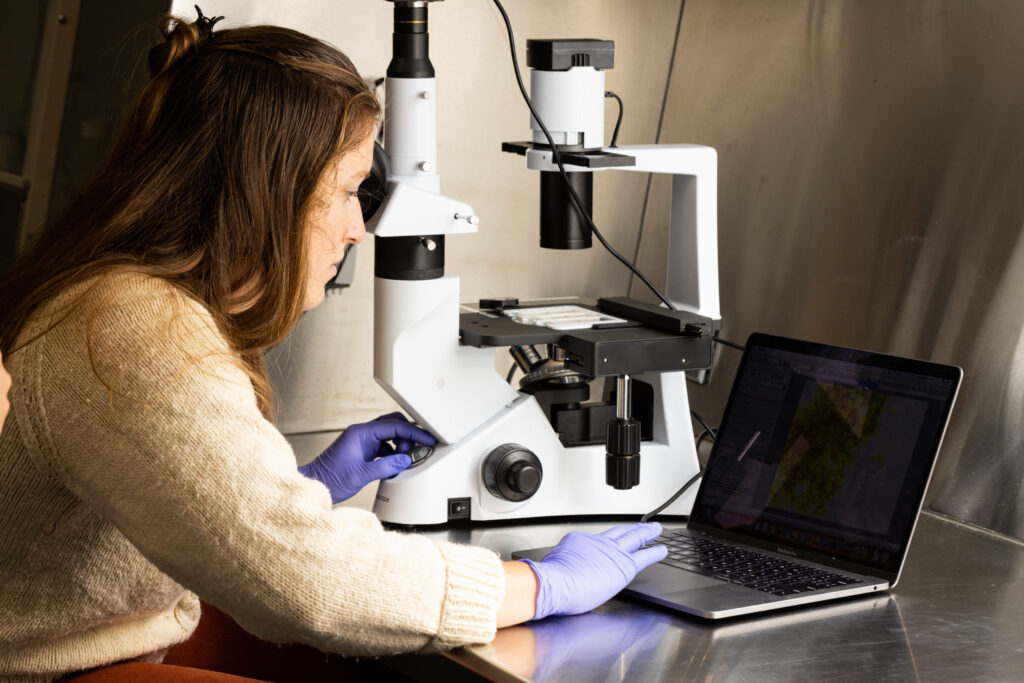parthenogenetic sporophyte
An embryonic sporophyte that develops without meiosis. These sporophytes typically have odd shapes when compared with sporophytes that develop from a fertilized egg.
Back to: Building a Gametophyte Seed Bank
After gametophytes have been in culture for a long time, they may start to get off balance. In mixed cultures, one sex could begin to outnumber the other; this is not an immediate issue, but it could cause issues later if spools are seeded with a mixture of 80% males and 20% females rather than a mixture of 50% males and 50% females. If this is the case, the culture may need to be supplemented with a different culture when you use it for seed. Other issues to look out for are the overabundance of sporophytes, light biomass color, and bleaching. You can monitor these issues during health checks and media changes.
Although keeping cultures under red light helps with preventing reproduction, sometimes cultures become reproductive anyway or grow parthenogenetic sporophytes. This can be caused by a small change in environmental conditions or the culture being out of balance. When a culture becomes reproductive there is an overabundance of sporophytes and the sporophytes compete with the gametophytes, resulting in slower gametophyte growth.
An embryonic sporophyte that develops without meiosis. These sporophytes typically have odd shapes when compared with sporophytes that develop from a fertilized egg.
Light biomass color and biomass bleaching can be caused by multiple factors such as nutrient starvation, competition with contaminants, and changes in light intensity. Understanding what is causing your cultures to bleach is essential to maintaining multi-year cultures.
Generally, if only one culture in your collection becomes unhealthy you can assume that something is wrong with that culture; if many cultures become unhealthy at once, you may need to check your environmental conditions to make sure they are right. You can use the Environmental Conditions Chart to check that your conditions are right. You will need to use a light meter to determine the PAR levels and a nitrate test kit to measure nutrient levels.
